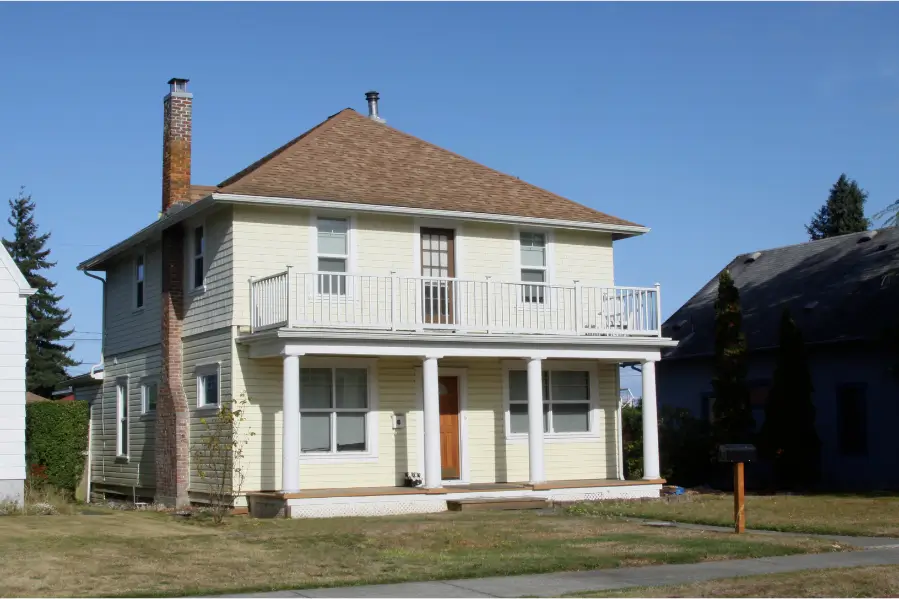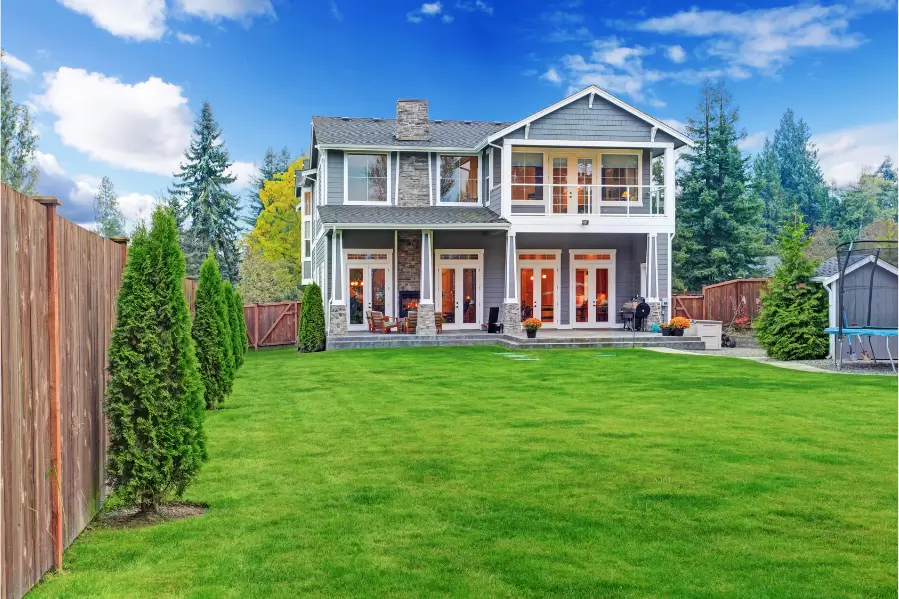Adding a second story to your house is not just a renovation, it’s an exciting opportunity to expand your living space and transform your home. However, the main challenge is that it needs thoughtful preparation and execution. It’s essential to understand the costs and time linked to that sort of renovation.
A second-story addition’s completion time can vary widely based on several factors, such as the project’s difficulty level, size, local building codes, weather, and the performance of the construction team. This expansion often takes several months or more than a year to complete. You can navigate the process with the aid of this comprehensive guide.
In this article, we will talk about how you can build a second story and how much time it takes. So, let’s begin.
Ideas to Build a Second Story

There are various approaches to adding a second story to your house. Each approach has pros and cons. The method you use depends on a number of factors, including your tastes, the foundation requirements, the construction of your home, and local building codes.
Here are the four primary methods to build a second story of your home.
1. Build from Scratch
This technique involves scraping the upper level and starting from scratch to build an entirely new one. It is a common method for expanding a single-story home, particularly ranch-style homes, by adding a second floor. This method’s unlimited flexibility and design freedom are among its key features.
You may design the new area exactly the way you desire. However, as it requires considerable demolition and repair, this method may be more costly and time-consuming than other options.
2. Replace Roof
It is another way to build a second story. This method involves cutting off the present roof in sections to provide room for building the new structure. Roof replacement occurs once the new structure is constructed. It is necessary to manage the roof carefully to restore it correctly.
3. Expand Over an Existing Structure
This approach involves constructing a second floor above an existing one-story portion, like a porch or garage having a flat roof. Utilizing an already-existing structure might reduce expenses and development time.
The Second Story Addition is Based on Weeks

Adding a second story to your home is a significant renovation project that can transform your living space. However, this type of addition requires careful planning and execution, which affects the overall timeline. Here is a timeline of this addition.
Week 1-6: Structural Work
- In week one, demolition starts.
- In week three, new floor supports are framed and installed.
- In weeks five and six, the home’s roofing sheets and windows are added, making it weatherproof.
- By week four, outer walls and inner partitions are constructed.
Week 6–14: Drywall and Rough-Ins
The rough-ins for the HVAC, plumbing, and electrical work begin in week six and last for three to four weeks. Week 10 is spent on checks, while Week 11 belongs to insulation. Weeks 12 through 14 are in which drywall installation and exterior finishing is completed.
Week 14–24: Completions
Weeks 14–15 will be spent on flooring, and weeks 16–17 will be used for finishing carpentry. Between weeks 18 and 20, painting and cabinet installation take place. You may settle back into your new two-story home in week 22 once the final city inspection takes place in week 21.
Timeline for Adding a Second Story
There are various steps, including the process of adding a second story to your home and the breakdown phases. The following are estimated timelines for the various phases and how much time each step will take.
| Phase | Duration |
|---|---|
| Planning and Design | 1-3 months |
| Permitting and Approvals | 1-3 months |
| Site Preparation and Demolition | 1-2 weeks |
| Framing and Structural Work | 1-2 months |
| Roofing and Exterior Work | 1-2 months |
| Interior Work (Electrical, Plumbing, Insulation, Drywall, etc.) | 2-4 months |
| Finishing (Flooring, Painting, Fixtures, etc.) | 1-2 months |
These deadlines are only estimates that may vary based on your project’s details. A more specific timeline for your particular addition may be gained by contacting a builder or a contractor.
1. Planning and Design: 1-3 Months
During this initial phase, you will consult with designers and architects to develop complete sketches for your new second level. It involves selecting final design choices, getting estimations of costs, and creating blueprints. This phase is crucial as it ensures that the design fits your needs and budget, and that last-minute modifications can be avoided, preventing delays.
It’s crucial to take the time necessary at this phase to make sure the design fits your needs and budget. Moreover, last-minute modifications can cause delays.
2. Permitting and Approvals: 1-3 Month
The process includes obtaining construction licenses, building permissions, and any other regulatory clearances needed for your project. Depending on the regional regulations and the complexity of your project, this phase’s timeline may change.
To prevent delays, it is essential that the necessary documentation be submitted on time. This proactive approach can significantly contribute to the smooth progress of your project.
3. Site Preparation and Demolition: 1-2 Week
Preparing the site for construction includes a variety of tasks, such as removing any existing structures, cleaning up any debris, and installing temporary supports. Effective site preparation and demolition can help prevent delays in the later stages of development.
4. Framing and Structural Work: 1-2 Months
The framing phase in building the new second story, including the walls, floors, and roof supports. This period can be greatly affected by the weather; favorable conditions can speed up development, while unfavorable ones might cause delays.
Make sure the framing is done correctly to ensure the new addition’s overall strength and stability.
5. Roofing and Exterior Work: 1-2 months
Installing the windows, siding, roof, and any other external finishes are all part of this step. It is essential to make sure the exterior is properly weather proofed and sealed to prevent leaks or problems in the future.
This stage shelters the interior from storms while also enhancing the exterior look of your house.
6. Interior Projects (Plumbing, Drywall, Electrical, Insulation, etc.): 2-4 Months
All of the newly constructed building’s systems, such as the drywall, plumbing, electrical, and insulation, will be finished during this phase. Maintaining this phase on plan can be eased by efficiently organizing many workers.
Due to the complexity of the interior work, careful preparation and scheduling are frequently necessary to ensure that the tasks get completed in the correct order.
7. Finishing (Flooring, Painting, Fixtures, etc.): 1-2 Months
The last stage involves setting up flooring, painting the walls, and adding finishing touches and connections. This stage needs careful attention to detail in order to provide a high-quality finish. At this point, the finishing touches connect all of the work together, and your new second story begins to feel and look like a part of your house.
You can work together with your contractor to ensure an easy and successful renovation keeping in view the timetable and processes involved in building an additional story.
Key Factors that Affect the Timeline of Second Story Project
How long it takes to add a second story to your home may depend on a number of factors:
- Applications for Permits: Postponing the submission of permits can change the construction timeline.
- Weather: Bad weather has a chance to stop construction, particularly when it comes to the framework and outside work steps.
- Material Availability: Delays or shortages in the delivery of materials may cause the project to go on hold.
- Plan Modifications: After construction has begun, any modifications to the project’s design or scale may result in serious delays.
Consult Professionals for Home Addition Renovation
Adding a second story to your home is a big project that needs careful planning and execution. It’s important to work with professionals to make sure the renovation goes smoothly and to avoid potential issues. Experienced contractors can help guide you through the process, ensuring that every step is completed correctly and efficiently.
Home Addition Services by Smart Remodeling LLC
If you live in Houston and need a reliable contractor for your second-story addition, Smart Remodeling LLC is an excellent choice.
With 14 years of experience and a Best Houzz Award for their exceptional work, they offer comprehensive services from planning and design to construction and finishing. Their expertise and award-winning service make them a top choice for home renovations.
Conclusion
In summary, adding a second story to your house is a notable remodeling project that needs to be carefully planned, organized, and carried out. A complete second-story addition can take anywhere from six to twelve months; however, a small addition can take approximately half of that time.






